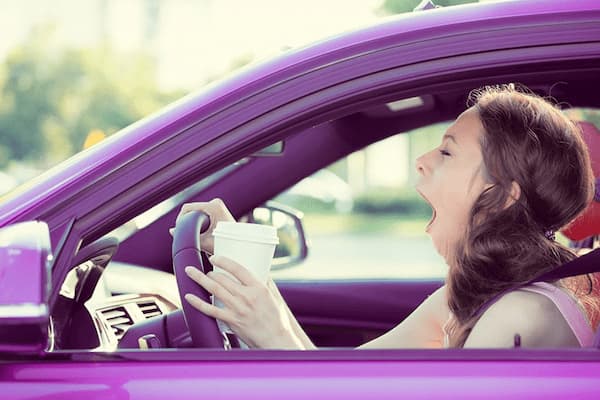While getting enough sleep each night may help to prevent some of these accidents, drivers should also become aware of the symptoms of sleepy driving and take precautions to ensure that they are alert and cautious while operating a vehicle. These include avoiding the road during the hours of the day when people are most susceptible to drowsiness, as well as refraining from using alcohol, painkillers, or sleep-inducing prescriptions if you want to drive. Can you prevent drowsiness on long trips? Drowsy driving can occasionally be a sign of an underlying sleep issue.
How To Prevent Drowsiness On Long Trips?
- Sleep for roughly four hours.
- Reduce speed.
- Plan long journeys for the evening.
- Turn on the radio in the car.
- Take breaks at regular intervals.
- Consider including rest stops in your route in advance.
- Driving alone
- As you drive, swivel your gaze from side to side.
What Makes People Drowsiness While Driving?
Any time a driver is tired or sleepy and operating a vehicle, it is referred to as drowsy driving. Studies have revealed that driving while fatigued has effects that are comparable to those of driving while intoxicated, even if the driver has not consumed alcohol. These side effects include a lack of coordination and attention, a delay in reaction time, and poor judgment. 24 hours without sleep is compared to having a blood alcohol level of 0.10%, which exceeds the legal limit3 for driving in all 50 states.

While the effects of insufficient sleep can affect anyone, some people are more prone to falling asleep while driving. These include:
- Tow truck, semi-truck, trailer, and other large vehicle commercial drivers.
- People with sleep disorders that cause sleep loss and/or sleep-disordered breathing
- Those who take medications that cause drowsiness
- Shift workers who work at night or whose shifts are relatively long
Drowsy driving-related accidents are also more likely to occur in specific driving conditions. Between the hours of 12 am and 6 am, or in the late afternoon, are when these collisions happen the most frequently. Your circadian clock, an internal timekeeper that controls sleep, appetite, and other bodily processes, is in charge of controlling the natural energy dips that occur at both of these times. When they crash, many drowsy drivers are alone in the vehicle, and a large proportion of these collisions take place on highways and rural roads.
Warning signs to watch for if you’re concerned about drowsy driving include:
- Frequent yawning or blinking
- Missing an exit or road sign
- Trouble remembering the last few miles you’ve driven
- Feelings of “nodding off”
- Difficulty keeping your head upright
- Following other cars too closely
- Drifting into the other lane or hitting rumble strips
Conclusion
It can be really dangerous when tiredness doesn’t set in until you are already driving. The good news is that you can lower your risk of dozing off while driving. It’s crucial to start by keeping an eye out for any early warning signs of drowsiness, such as swerving out of your lane, running over a rumble strip, frequently yawning, having trouble focusing, and failing to see traffic signals. The Minnesota Safety Council advises finding a secure location where you can stop for a little break rather than depending on an open window or the radio to keep you awake. It’s better to have coffee or take a short nap (between 15 and 45 minutes) if you’re feeling tired.
